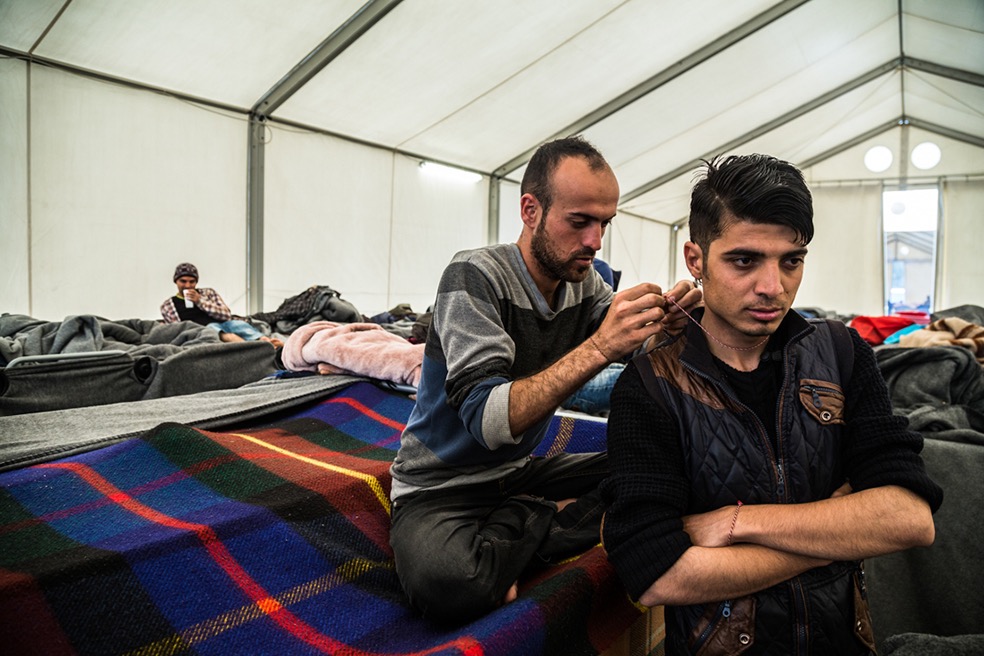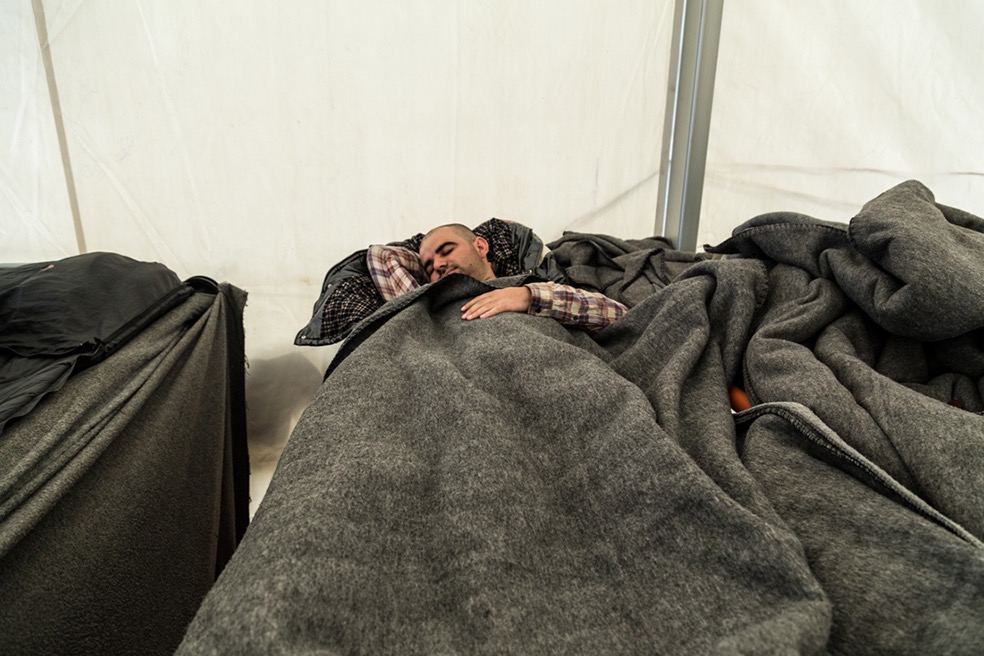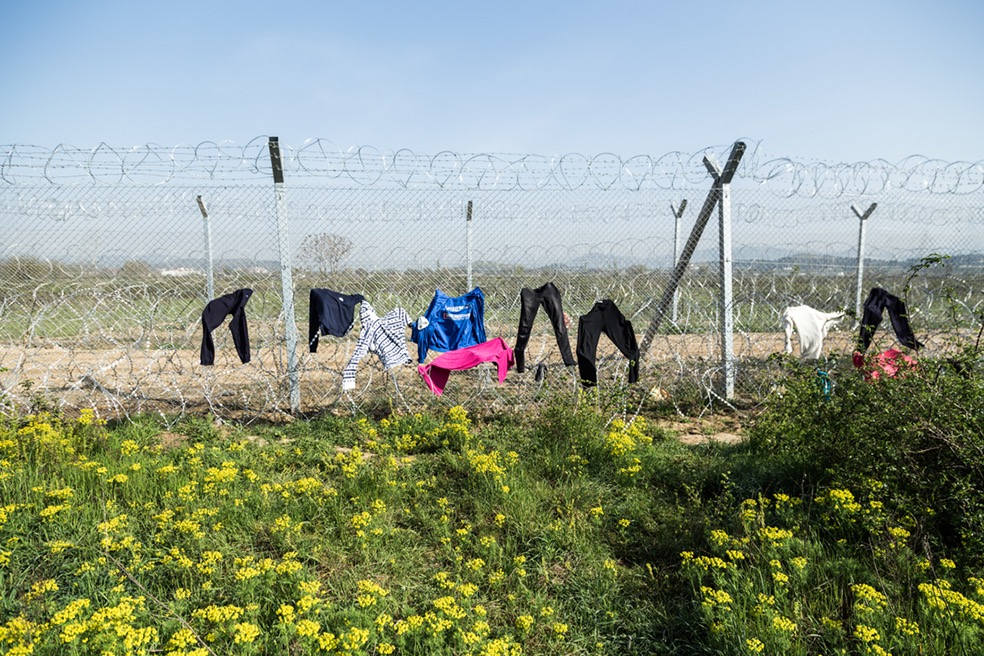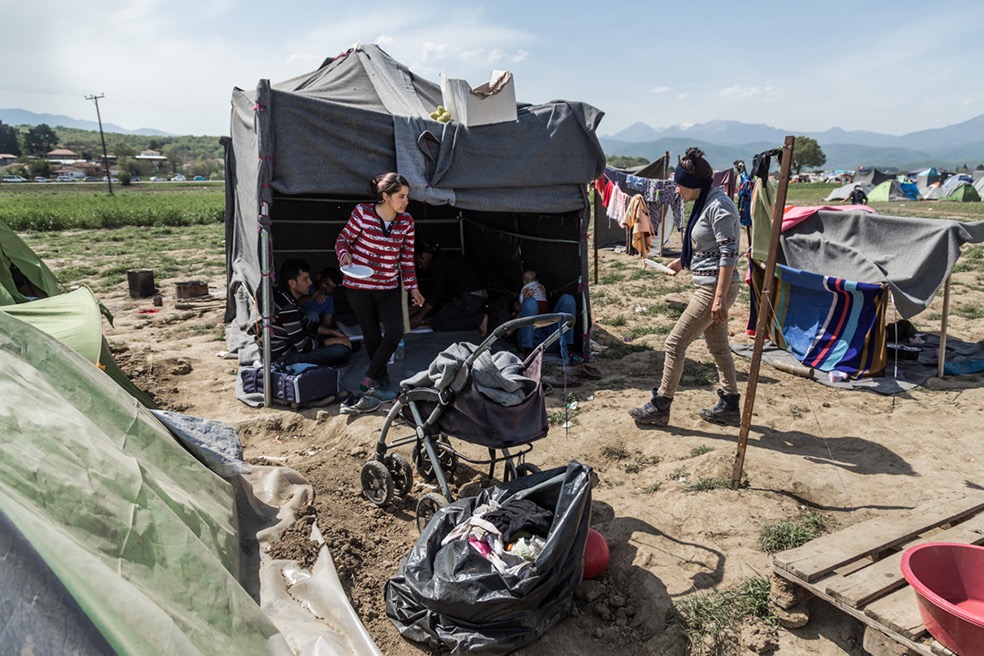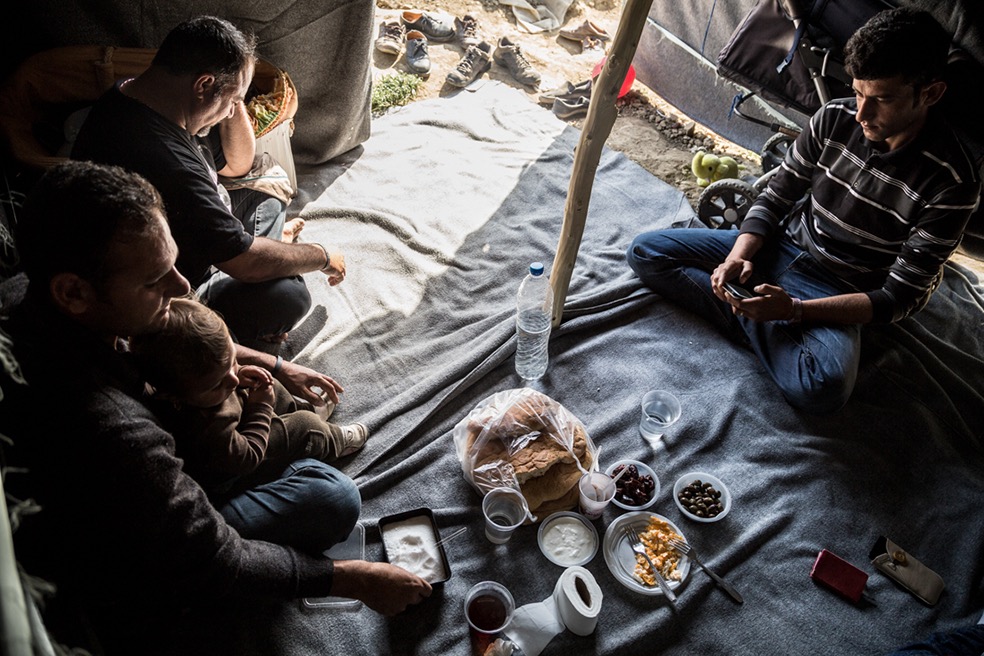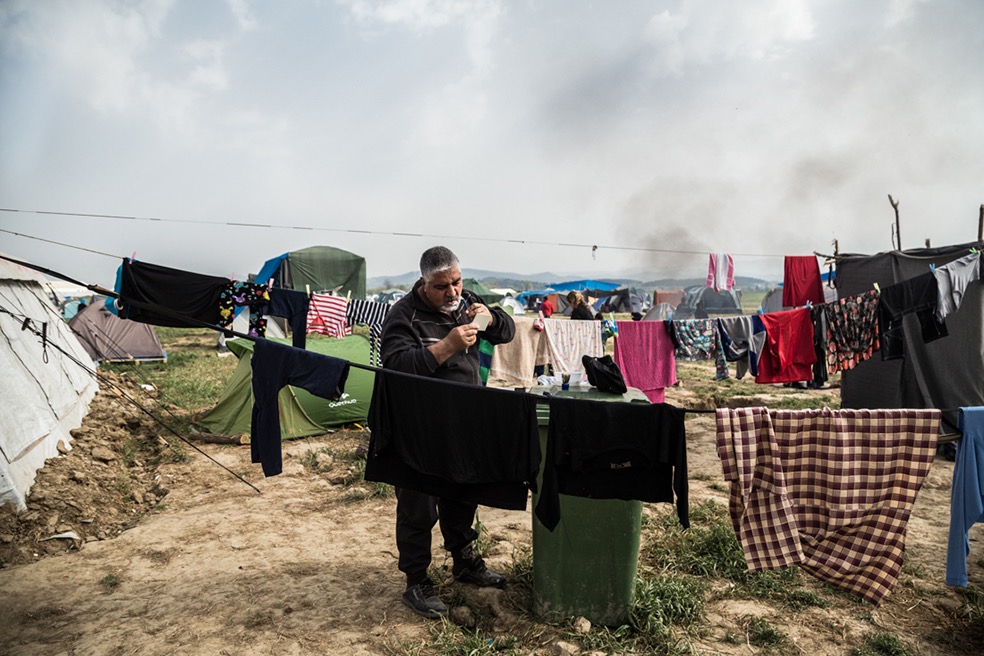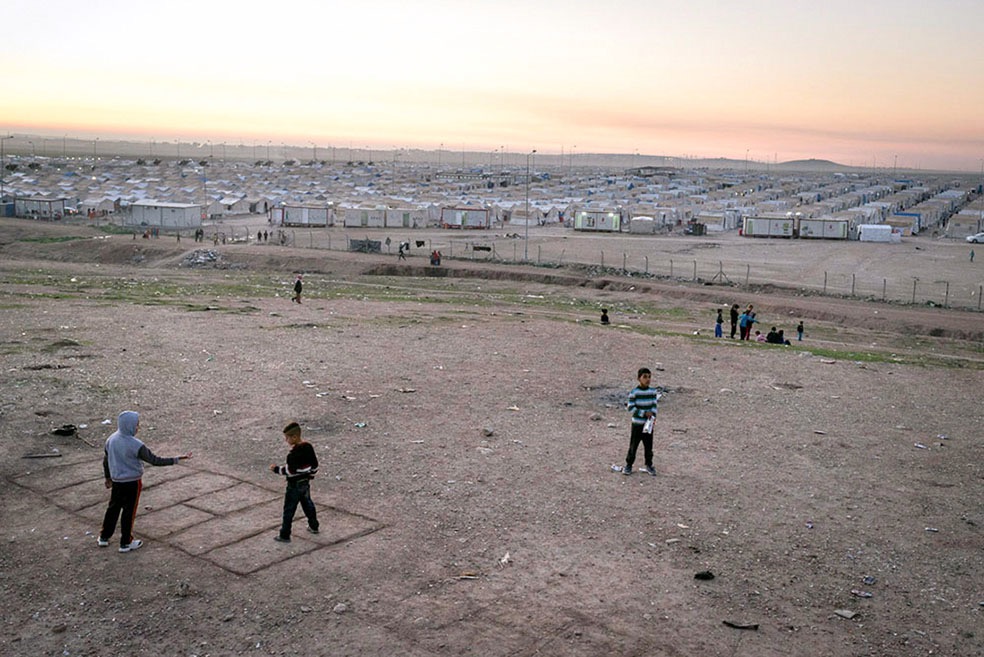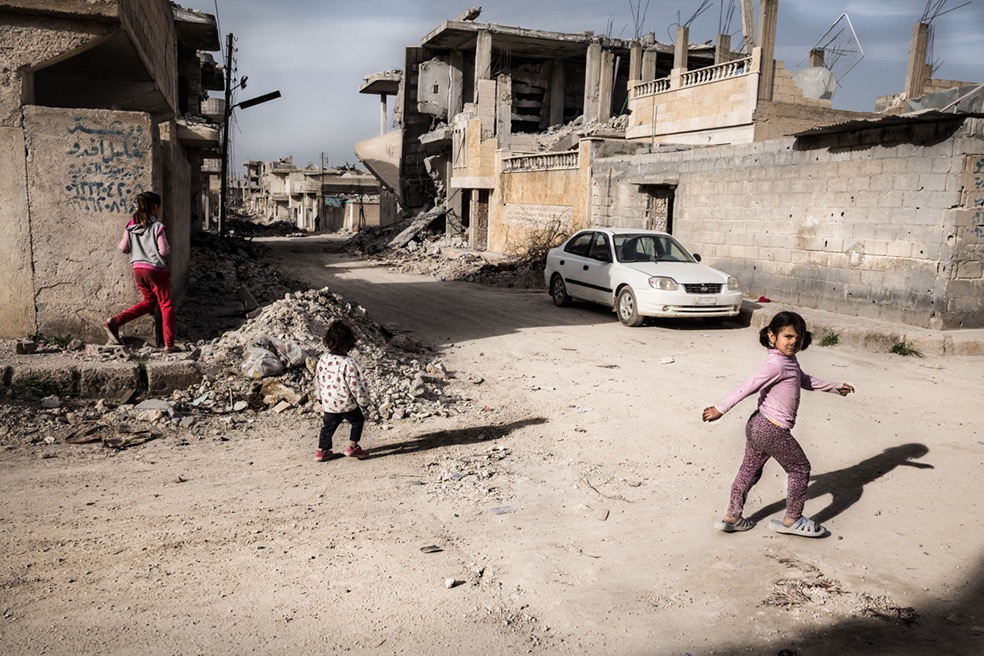Ezidi people (or Yazidis in English) are a religious group of about half a million people who is native of the northern Iraqi province of Nineveh. They share the same language and much of the culture of the Kurds of Turkey and Syria. Because of their attachment to a cult of Gnostic origin and pre-Islamic they’ve been receive years of strong repression. In last years they’ve been the main targets of ethnic cleansing by IS militiamen, along with Christians and Shiites. Everyone remember their fugue towards the mountains of Sinjar , when IS began a strong offensive in northern Iraq on early August 2014. At that time, IS forces committed a massacre, killing over 5000 yazidis men and kidnapping other thousands of women, sold into slavery in Mosul or Raqqa.
The population who survived to the attacks fled in the mountains around Sinjar where it was trapped without food, water or medical care, facing starvation, dehydration and the risk of more incursions by IS for several weeks. Fortunately PKK and YPG Kurdish forces open a corridor towards the mountains to Rojava ( Northern Syria, led by Kurdish forces ) in order to make them flee safely. Thousands of yazidis get safe in Rojava or in Kurdistan on Turkish territory at that time. The first time I’ve ever met a community of yazidi, was properly in A small city in Kurdistan on Turkish territory, Viranşehir. Thousands of people who fled from ISIS, received the solidarity of the Kurds in Turkey. In this city, they’ve been hosted in a camp, built by the local municipality and self-organized by the yazidis itself. Some of them, thinking that a better life might be reach in Europe, have started their long travel of hope through the north from here, trying to put an end to a continual sorrow. Unfortunately their pain seems to be endless, because as like thousands of people are fleeing from war zones due to unsafe situations, in Europe their tragedy have been continued hardly to exists.

The world finished once again at the gates of Europe in informal refugee camps, like the former one that existed in Idomeni, between Greece and Macedonia. Here in this notorious makeshift tents camp on the Skopje railway line surrounded by waste, toxic fumes and mud, since February 2016 there were over 1200 yazidis. They recognized eachothers wearing necklaces with the colors of their community, red and white. They use it in order to being safe as a community, knowing and protecting eachother from other people who consider them infidels. Yazidis had stuck waiting for the reopening of the border with other thousands of migrants; the border had been forcedly closed on beginning of March 2016 by FYROM (Republic of Macedonia) authorities, after several violence used against immigrants since the beginning of the winter 2016, with the silence approval of Europe; the same Europe that at the time of yazidi’s flee in Sinjar mountains was crying for them, has been closed its eyes in front of them.
Their hope to pass the border has been killed definitely, when on May 2016, Greek’s authorities decided to dislodge the informal refugee’s camp on the border with the Republic of Macedonia and deport a great majority of the inhabitants to governmental’ s camps, waiting for decide about their future, killing their freedom of moving. Yazidis in whole the territory of Greece were more than 3000 on June 2016. Despite the removal of Idomeni camp, where there was the biggest community, the majority of them now still lives in Greece. Some yazidis were deported in several camps like the ones in Nea Kavala or in Katerini.
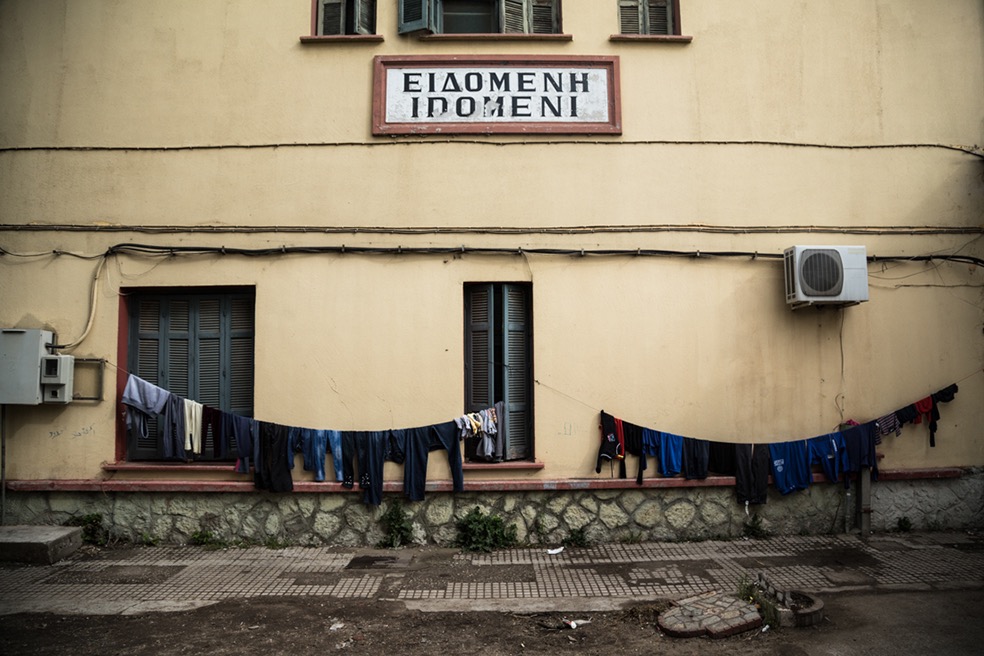
A big part of yazidi community take shelter from the deportation to some governmental’ s camps, travelling to Pireus or volountarly moving back to Iraq, tired about the European’s dream. On July 2016 there has been a light for some yazidis, due to the decision of Portuguese’s government to welcome around 500 of them. Unfortunately Greek authorities refused the resettlement and decide to make them stay inside its camps. In recent months I have exchanged several messages with the Yazidi known between Greece and Turkey and some of them still are hoping to find a place out of Greece, Turkey or Iraq to flee for a new breath of life. It’s not important where or when, the only need is to go away from oppression and violence.
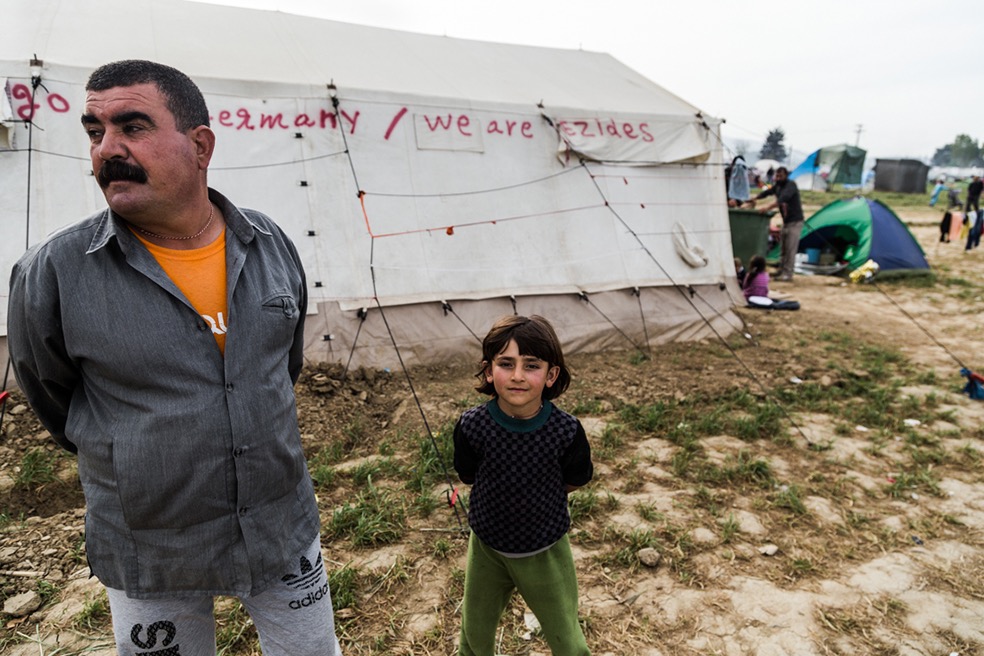
Giacomo Sini, born in Italy on 1989. Graduated in social sciences at the University of Pisa on January 2014. Giacomo, while studing, has spent the last eight years of his life traveling between Europe, Central Asia, Middle East, Near East, the Balkans, North Africa and the Caucasus, touching some areas crossed today as in the past, by numerous conflicts. Countries such as Afghanistan, Iraq, Kosovo, Palestine, Georgia, Ukraine, Lebanon, Kurdistan and Syria have left their mark on his personality. On last years (2011-2015) thanks to some travels around Near east, he took the decision to going on the boundery lines bewteen Syria and neighboring countries, analyzing the civil conflict from the point of view of the fugitives and locals.
Website: giacomosini.com

